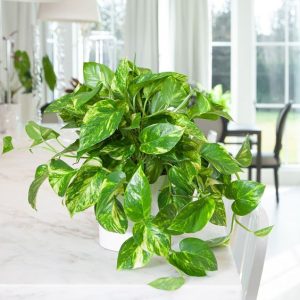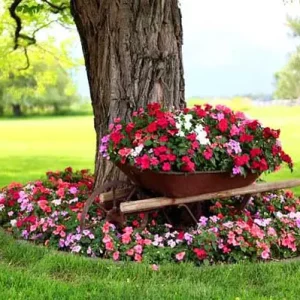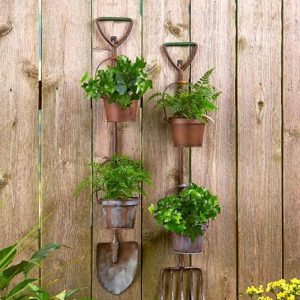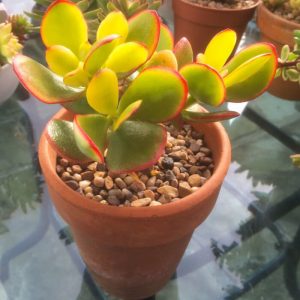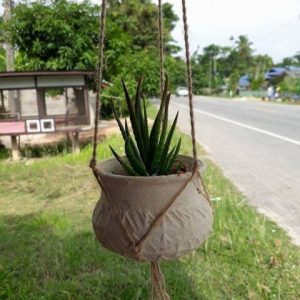
Before picking up your garden shovel, seeds, and soil, it’s important to determine whether the time is right to plant. Doing so sets your garden up for success, which will save you time, frustration, and resources in the long run. While the best time to plant will vary depending on your climate and location, we’re sharing a general guide on what to plant when, including flowers, vegetables, shrubs, and more.
Generally speaking, the ideal planting season is between spring and fall. In spring, the weather is usually mild, and it’s the time of year when nurseries start filling up with color. Fall is another popular planting period. The soil is typically still warm, which allows roots to grow until the ground freezes. With these seasons in mind, there are some factors that will guide you when to plant.
Your growing zone—your region’s average temperature range—will ultimately dictate when to plant in your area. “Your growing zone is important because different plants have ideal planting temperature ranges and conditions,” says PeggyAnne Montgomery, horticulturist forFlowerBulbs.com. “Knowing your zone helps you choose the right planting window so your plants can thrive.”
Knowing the first and last frost date in your area will determine how early and late you can place plants in the ground. “A frost date is the average date of the last light freeze in spring or the first light freeze in fall,” says Montgomery. “These dates are estimated based on historical climate data. There is still a 30 percent chance that a freeze could occur, but they are an excellent rule of thumb.”
Keep in mind that some plants are only available at certain times of the year, and that alone determines their planting season. For instance, certain roses and trees are sold as bare roots, which means they should only be planted in the dormant season of late autumn and winter. On the other hand, spring-blooming bulbs often require a cold dormancy period to bloom.
Always take overall weather conditions into consideration when planting. If you’re dealing with an unpredictably wet spring, then working the soil can be unfruitful. Or if summer has been particularly hot, it may be best to patiently wait until the fall to put your plants in the ground.
Always check seed packet instructions or consult your local gardening center for specific timing on your chosen plants.
When you plant bulbs will vary depending on when they flower.
- Summer flowering bulbs: Plant these after the last spring frost date in your in your area. Many summer flowering bulbs come from warm climates and appreciate warmer ground temperatures, says Montgomery.
- Spring-flowering bulbs: These need some time before the ground freezes to put down roots and establish themselves. While the timing will vary depending on your zone, spring-flowering bulbs should be planted in fall. “If you’re late to the game, don’t worry. Daffodils and tulips can be planted a few weeks later than the times listed without any problems,” says Montgomery.
Many perennials—plants that re-grow every year—can be planted in spring and fall. “Spring planting offers warm soil, rain, and sunshine to nurture new roots before the summer heat arrives,” says Jim Putnam, expert for Southern Living Plant Collection and host of HortTube. “Fall planting gives perennials a head start on root development and allows them to establish themselves over winter for a vibrant spring display.”
While perennials are planted just once and return the following year, annual flowers must be replanted each year. “The best time to plant most annuals really depends on the type of plant,” says Montgomery. “For tender varieties like marigolds and petunias, be sure to wait for late spring or early summer with warm soil temperatures. However, some cool-season annuals, like pansies, can tolerate being planted in early spring after the danger of frost has passed.”
The best time to plant edible plants like vegetables, fruits, and herbs will depend on your location, climate, and the variety. But there are some general guidlines you can follow for when to plant.
Many vegetables are planted in spring after the last frost date for your area, but this may vary depending on what you’re planting. “Cool-season vegetables such as broccoli, cabbage, cauliflower, spinach, kale, and root vegetables can be planted in late summer or early fall,” says Carrie Spoonemore, co-creator of Park Seed’s From Seed to Spoon app.
Warm-season vegetables—tomatoes, corn, peppers, cucumbers, squash, and beans—can be planted in late spring or early summer when the weather is consistently warm, says Spoonemore. Keep in mind that some warm-season vegetables may not do well in very hot climates, so choosing varieties that are suitable for your area is important.
Generally, it’s best to plant fruit plants in the early spring or late fall when the weather is cooler, and there is less stress on the plants, says Spoonemore. Fruits like strawberries, blackberries, blueberries, and raspberries can be planted in the early fall for a spring harvest. Keep in mind that most plants won’t bear fruit in their first year or take a couple of seasons or years to get established, so be sure to do some research when selecting the type and variety.
When you plant herbs will depend on the type you’re growing. “Some herbs, such as parsley and cilantro, prefer cooler temperatures and can be planted in early spring or fall,” says Spoonemore. “Other herbs, such as basil, dill, and thyme, prefer warmer temperatures and should be planted after the last frost in your area.”
Spring and fall are generally the best seasons for planting trees. “This gives the tree time to establish its roots before facing summer heat or winter cold,” says Montgomery. “However, the ideal season can vary depending on your climate, so it’s always a good idea to check with local experts for your specific type of tree.”
Deciduous trees, including dogwood, magnolia, and oak, do well when planted in spring, as they need longer days to adjust and concentrate on root growth. Conifer trees like pine, fir, and juniper prefer warmer soil and should be planted in late summer to early fall, says Jen McDonald, garden specialist and founder of The Garden Girls.
When you plant shrubs in your garden depends on the type you want to grow. “Fall is the optimal time to plant shrubs that begin blooming in early spring, such as azaleas,” says Putnam. “Planting azaleas in the fall will give your landscape early-season color come spring while allowing the plant’s energy to focus on developing a deep root system and acclimating to a new space.” On the other hand, planting summer-blooming shrubs like butterfly bush in spring is ideal.

